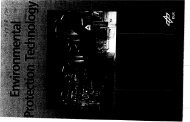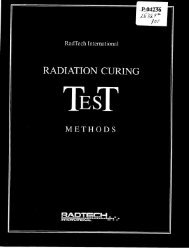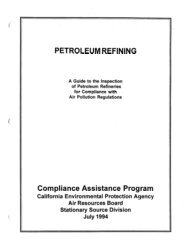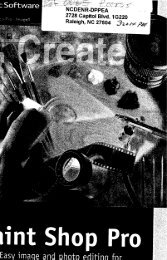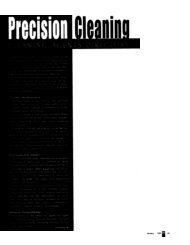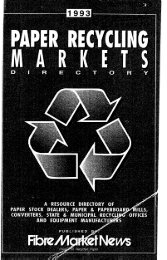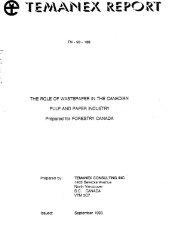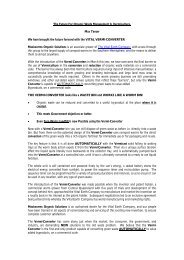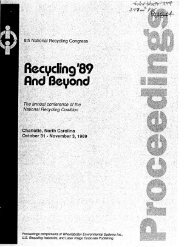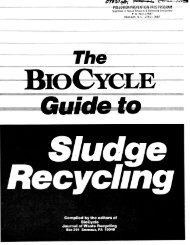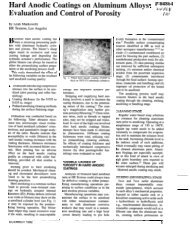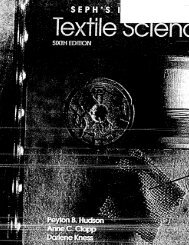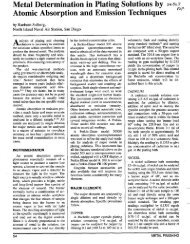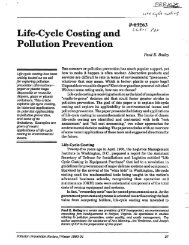Electronic Parts/Guidelines - infoHouse
Electronic Parts/Guidelines - infoHouse
Electronic Parts/Guidelines - infoHouse
Create successful ePaper yourself
Turn your PDF publications into a flip-book with our unique Google optimized e-Paper software.
3.0 Toxic Material Reduction<br />
3.1 Introduction<br />
3.2 Dioxins<br />
It is difficult for those in the packaging community to view packaging materials<br />
as being life threatening. It is not too difficult, however, to see packaging cre-<br />
ating a problem in landfills ... it fills them up. But that fact certainly doesn't<br />
present a hazard. Besides. there is a lot of effort going on today to source<br />
reduce, reuse and recycle. In addition and where permitted by law, there is<br />
incineration which can transform a lot of solid waste into a little ash.<br />
Packaging is very functional. It protects products. You can iabei it and print<br />
information on it. Professional looking colors and graphics can convey a<br />
message to the customer concerning the quality of the product inside. Pack-<br />
aging during its useful life doesn't present much of an environmental hazard. In<br />
fact, some packaging is designed to protect the environment from the contents of<br />
the package.<br />
Concern has been expressed over toxic threats presented to the environment by<br />
packaging. These threats are most visible at a package's "front-end'' and its<br />
"back-end." At the front-end, some of the chemicals used in the production and<br />
processing of packaging materials are highly toxic, resulting in hazardous<br />
wastes, toxic air emissions, and discharge of toxic effluents into waterways. At<br />
the back-end, afler the useful life of a package is over, toxic elements can again<br />
be introduced into the environment, even with "proper" disposal of the materials<br />
in landfills or incinerators.<br />
.<br />
Much attention is centered today on environmental contamination by dioxins and<br />
heavy metals. Dioxins do not occur naturally, they are created, and once<br />
created, do not biodegrade readily. Heavy metals do exist naturally, they are<br />
elements. Industrial processes convert them into particles which are much more<br />
environmentally mobile than the natural form. Although packaging is not the<br />
major contributor of these toxic agents to the solid waste stream, their removal<br />
from packaging could make solid waste management safer and serve to alleviate<br />
public concerns about solid waste management treatment facilities.<br />
Packaging materials used by IBM do not represent any more and normally less<br />
of an environmental hazard than do those of other industries. However, IBM has<br />
in place a policy statement addressing its solid waste. It is in support of this<br />
policy that this information on packaging related toxic wastes is presented.<br />
3.2.1 Introduction<br />
Since the early lQ8O's environmental dioxin has become an issue of increasing<br />
concern to environmentalists, government agencies, and to various industries<br />
within the United States. Dioxin, which is a carcinogen, a teratogen, and a<br />
mutagen, is present in the environment at very low levels as a by-product of<br />
combustion in municipal incinerators, forest fires, automobile exhausts, and<br />
TOXIC Material Reducflon '11



